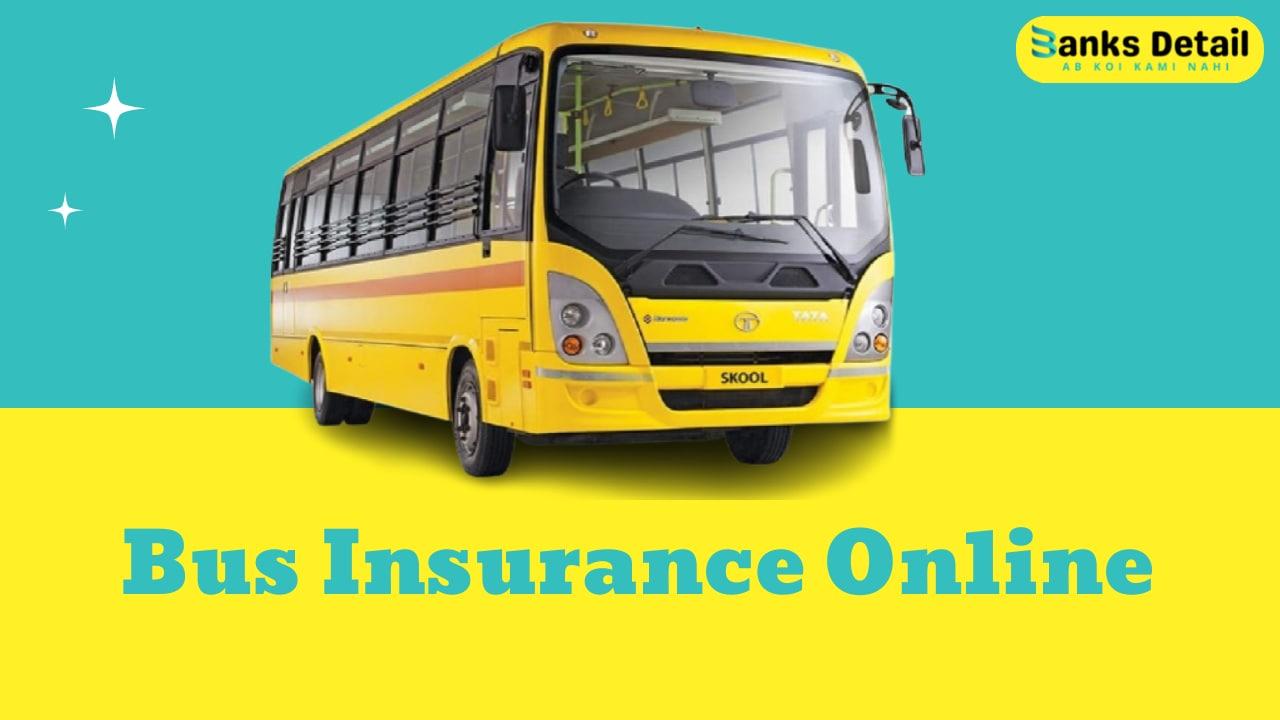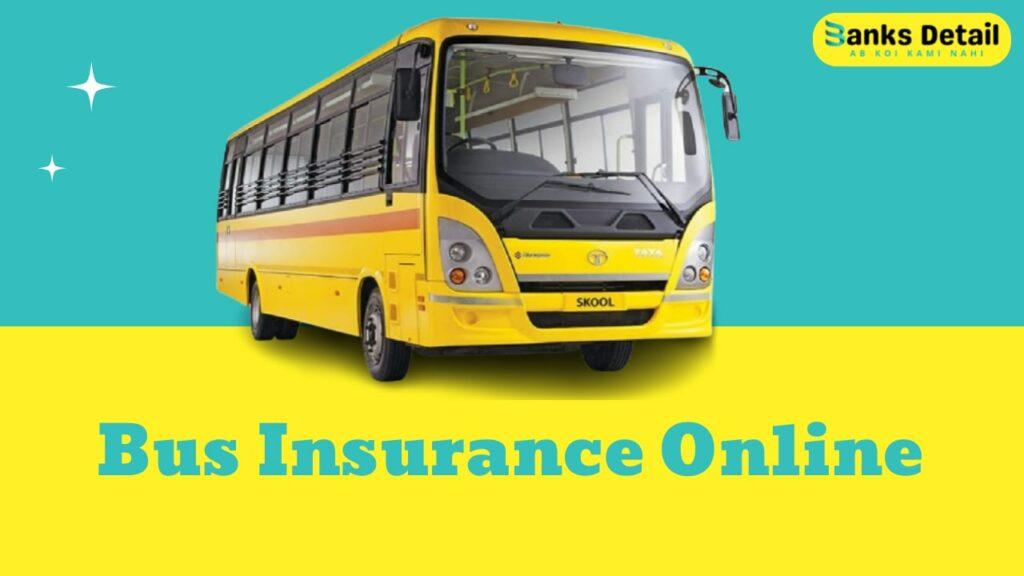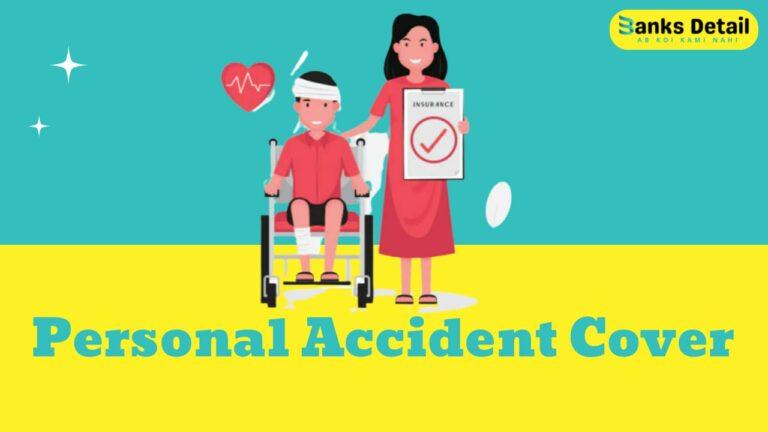Bus Insurance: Protecting Your Commercial Vehicle Investment

Introduction
Owning and operating a commercial bus comes with a unique set of responsibilities and risks. Whether you run a charter bus service, a school transportation business, or any other form of commercial bus operation, protecting your valuable assets is crucial.
That’s where bus insurance steps in. Bus insurance is designed to provide comprehensive coverage and financial protection against various unforeseen events, liabilities, and damages that could impact your operations and finances.
In this guide, we will delve into the world of bus insurance, exploring its importance, the types of coverage available, key considerations when choosing a policy, and the benefits it offers to commercial vehicle owners.
We will also discuss the factors that influence insurance premiums, the claim settlement process, and important tips for minimizing costs while maximizing coverage.
By the end of this guide, you will have a solid understanding of bus insurance and the steps you can take to safeguard your commercial vehicle investment effectively. So let’s dive in and explore the intricacies of bus insurance together.

Understanding Bus Insurance
As a commercial bus owner, understanding the ins and outs of bus insurance is essential for protecting your investment and ensuring the smooth operation of your business.
Bus insurance provides comprehensive coverage that goes beyond standard auto insurance, addressing the unique risks associated with commercial vehicles.
Let’s delve into the key aspects of bus insurance to help you navigate this crucial aspect of your business.
Types of Bus Insurance Policies
Bus insurance encompasses various types of coverage tailored to meet the specific needs of commercial vehicle owners. Here are the main types of bus insurance policies available:
- Commercial Vehicle Insurance: This type of insurance is the foundation for bus owners. It provides coverage for accidents, damages, theft, and third-party liabilities. It safeguards your bus and protects you financially in case of unexpected incidents.
- Passenger Carrying Vehicle Insurance: Specifically designed for buses transporting passengers, this insurance policy focuses on the unique risks associated with passenger safety, injuries, and liability. It ensures that both your passengers and your business are adequately protected.
- Comprehensive Insurance: Going beyond the mandatory requirements, comprehensive insurance offers extended coverage for your bus. It protects against a wide range of risks, including damages from natural disasters, vandalism, and theft. With comprehensive insurance, you have greater peace of mind knowing that your bus is safeguarded from various perils.
Key Factors to Consider
When choosing a bus insurance policy, several factors warrant careful consideration:
- Policy Coverage: Evaluate the coverage options provided by different insurers. Consider the specific needs of your business and ensure that the policy includes all the necessary protections. This may include coverage for accidents, damages, theft, bodily injury, property damage, and legal liabilities.
- Premium Calculation: The premium you pay for your bus insurance is influenced by various factors such as the type and value of your bus, its usage patterns, the age and experience of your drivers, and the location where your bus operates. Understanding how premiums are calculated can help you make informed decisions while seeking competitive rates.
- Insurer’s Reputation and Financial Stability: Research the credibility and reliability of insurance companies before making a decision. Look for insurers with a strong track record of excellent customer service and prompt claims settlement. Additionally, consider the financial stability of the insurer, as it ensures their ability to fulfill claims obligations.
Common Exclusions in Insurance Policies
While bus insurance provides valuable coverage, it’s important to be aware of common exclusions that may exist in your policy.
These exclusions can create gaps in coverage, leaving you vulnerable to unexpected risks. Some typical exclusions include wear and tear, intentional acts, and damages caused by uninsured drivers.
Understanding these exclusions allows you to address potential gaps through additional coverage or endorsements.
By understanding the nuances of bus insurance, you can make informed decisions and secure the appropriate coverage for your commercial vehicle.
In the following sections, we will explore more specific topics such as premium calculation, claim settlement, and tips for minimizing insurance costs. Let’s proceed and delve deeper into the world of bus insurance.
Tips for Minimizing Bus Insurance Premiums
As a commercial bus owner, managing your expenses is a crucial aspect of running a profitable business. One significant expense is bus insurance premiums.
While insurance coverage is essential, there are several strategies you can employ to minimize your insurance costs without compromising on the level of protection.
Let’s explore some effective tips for reducing your bus insurance premiums.
1. Driver Training and Safety Programs
Investing in driver training and safety programs can have a significant impact on your insurance premiums.
Well-trained drivers with clean driving records are considered less risky by insurers. By implementing driver training programs, defensive driving courses, and safety initiatives, you demonstrate your commitment to safety and risk reduction.
Insurance companies often reward such efforts with lower premiums.
2. Vehicle Security Measures
Enhancing the security of your buses can help deter theft and reduce insurance costs. Consider installing advanced security systems such as GPS tracking devices, immobilizers, and alarms.
These security measures not only protect your valuable assets but also provide peace of mind to insurers, resulting in potential premium discounts.
3. Optimize Your Coverage Limits
Carefully assess your coverage limits to ensure they align with your actual needs. While it’s important not to be underinsured, having excessively high coverage limits can lead to unnecessary premium expenses.
Review your coverage requirements periodically and adjust your limits accordingly to strike the right balance between adequate protection and cost-effectiveness.
4. Consider Higher Deductibles
A deductible is the amount you agree to pay out of pocket before your insurance coverage kicks in. Opting for higher deductibles can lower your premiums significantly.
However, it’s important to evaluate your financial capacity to pay the deductible in case of a claim. Choose a deductible amount that you can comfortably afford without jeopardizing your business’s financial stability.
5. Maintain a Safe Claims History
Maintaining a safe claims history can work in your favor when it comes to insurance premiums. The fewer claims you file, the lower the risk perception for insurers.
By implementing robust safety protocols, promoting a culture of responsible driving, and prioritizing preventive maintenance, you can minimize the likelihood of accidents and claims. This, in turn, can result in lower premiums over time.
6. Shop Around and Compare Quotes
Insurance premiums can vary significantly among different providers. Take the time to shop around and obtain quotes from multiple insurers.
Compare the coverage options, exclusions, deductibles, and premium rates offered by each insurer. This allows you to make an informed decision and choose the insurance provider that offers the most cost-effective solution for your specific needs.
7. Bundle Your Insurance Policies
If you have multiple commercial vehicles or other insurance needs for your business, consider bundling your policies with a single insurance provider.
Insurers often offer discounted rates for bundled policies, providing potential cost savings for your bus insurance as well.
By implementing these tips, you can effectively minimize your bus insurance premiums while maintaining the necessary level of coverage.
However, always remember to strike a balance between cost reduction and adequate protection for your commercial vehicles. Take proactive steps to mitigate risks, promote safety, and explore opportunities for cost savings.
Understanding the Claim Process for Bus Insurance
Accidents and unexpected events can occur, even with the most careful precautions. In such instances, having a clear understanding of the claim process for bus insurance is vital.
Promptly reporting and efficiently managing claims can help you navigate the path to financial recovery and ensure a smooth claims settlement. Let’s explore the key steps involved in the claim process for bus insurance.
1. Reporting a Claim
The first step in the claim process is to report the incident to your insurance provider as soon as possible. Prompt reporting is crucial to initiate the claims assessment and settlement procedures promptly.
Most insurance companies have dedicated hotlines or online portals for reporting claims. Be prepared to provide essential details, such as the date, time, and location of the incident, a description of what happened, and any supporting documentation or evidence.
2. Claim Assessment
Once the claim is reported, an insurance adjuster will be assigned to assess the extent of the damages or losses.
The adjuster will investigate the incident, which may involve gathering additional information, speaking to involved parties, and examining relevant documents, such as police reports or witness statements.
The purpose of the assessment is to determine the liability and the coverage applicable to the claim.
3. Documentation and Evidence
During the claim assessment, it is essential to provide all relevant documentation and evidence to support your claim.
This may include photographs of the damages, repair estimates, medical reports (if applicable), and any other pertinent information that substantiates your claim.
Keeping detailed records and organizing them systematically can streamline the process and help ensure a favorable claim settlement.
4. Claim Settlement
Once the claim assessment is complete, the insurance company will make a decision regarding the claim settlement. If the claim is approved, the insurer will provide compensation according to the terms and conditions of your policy.
The settlement amount will typically cover the repair or replacement costs, minus any applicable deductibles. In case of third-party liabilities, the insurance company may also handle legal proceedings and settlement negotiations on your behalf.
5. Dispute Resolution and Legal Recourse
In some cases, disputes may arise during the claim settlement process. If you disagree with the insurer’s decision or face challenges in reaching a mutually agreeable settlement, you may need to engage in dispute resolution processes.
This may involve mediation or arbitration to resolve disagreements outside of the court system. In situations where a resolution cannot be reached, seeking legal advice and exploring legal recourse may be necessary to protect your rights and interests.
6. Communication and Updates
Throughout the claim process, maintaining clear communication with your insurance provider is essential. Stay updated on the progress of your claim, ask questions if you have any concerns, and provide any requested information or documentation promptly.
Open and transparent communication can help expedite the process and ensure that all parties involved are on the same page.
7. Follow-Up and Closure
Once the claim is settled, it is important to review the settlement details carefully. Verify that all necessary payments have been made and that there are no outstanding issues.
Keep a record of the claim settlement for future reference, including any receipts or documents related to repairs or replacements.
If you have any questions or require further clarification, reach out to your insurer for assistance.
By understanding the claim process for bus insurance and actively participating in the process, you can navigate the complexities of claims settlement more effectively.
Promptly reporting incidents, providing accurate and comprehensive documentation, and maintaining open communication with your insurer are key factors in ensuring a smooth and satisfactory claim resolution.
Emerging Trends in Bus Insurance
The world of bus insurance is continually evolving to address new challenges and meet the needs of commercial vehicle owners.
As technology advances and industries transform, emerging trends in bus insurance are shaping the way policies are structured and coverage is provided.
Let’s explore some of the key trends that are influencing the landscape of bus insurance today.
1. Telematics and Usage-Based Insurance
Telematics technology, which combines GPS and data monitoring systems, is revolutionizing the way bus insurance is priced and assessed.
By collecting real-time data on factors such as driving behavior, speed, distance traveled, and route analysis, insurers can offer usage-based insurance policies.
This approach allows commercial vehicle owners to pay premiums based on their actual usage patterns and driving habits, incentivizing safer driving practices and potentially reducing insurance costs.
2. Risk Management and Safety Programs
With an increased focus on safety and risk management, bus insurance providers are placing greater emphasis on proactive measures to mitigate risks.
Insurers often offer incentives for commercial vehicle owners who implement robust safety programs, driver training initiatives, and maintenance protocols.
By encouraging preventive measures and emphasizing safety, these programs aim to reduce the frequency and severity of accidents, ultimately leading to lower insurance premiums.
3. Cybersecurity and Data Protection
As digital systems become integral to bus operations, the risk of cyber threats and data breaches has become a significant concern.
Insurance companies are recognizing the importance of cybersecurity in the transportation sector and are incorporating coverage for cyber-related risks into their policies.
This includes protection against data breaches, ransomware attacks, and other cyber incidents that can compromise the security and operation of commercial buses.
4. Environmental Sustainability
With growing environmental consciousness, there is an increasing demand for greener and more sustainable transportation options.
Bus insurance providers are responding to this trend by offering coverage options that encourage the adoption of eco-friendly practices.
This may include incentives for electric or hybrid buses, coverage for charging infrastructure, and discounts for environmentally responsible operations.
These initiatives support the transition toward a more sustainable and eco-conscious bus industry.
5. Autonomous Vehicles and Insurance
The development and deployment of autonomous or semi-autonomous buses are gradually becoming a reality.
As these technologies advance, insurance companies are adapting their policies to accommodate the unique risks associated with self-driving vehicles.
Insurers are exploring coverage options for autonomous bus operations, including liability coverage in the event of accidents and coverage for technology failures or malfunctions.
As autonomous technology matures, insurance offerings in this space are expected to evolve further.
6. Customized Coverage and Endorsements
To meet the diverse needs of commercial vehicle owners, insurance providers are offering more flexible and customized coverage options.
Policyholders can now tailor their insurance policies to specific requirements, adding endorsements that provide additional protection for unique risks.
This flexibility allows businesses to optimize their coverage, ensuring comprehensive protection for their buses and operations.
7. Usage in On-Demand Transportation
The rise of on-demand transportation services has prompted insurance companies to develop specialized coverage options.
For businesses operating in the ride-hailing or shared mobility sector, insurers offer policies that cater to the unique needs of these operations.
This includes coverage for passenger liabilities, multiple drivers, and flexible usage patterns, providing appropriate protection for the evolving landscape of on-demand bus services.
As the bus insurance industry adapts to these emerging trends, commercial vehicle owners have more opportunities to optimize their coverage, reduce risks, and manage their insurance costs effectively.
By staying informed about these developments and working closely with experienced insurance professionals, bus owners can navigate the changing landscape of bus insurance and make informed decisions to protect their valuable assets.
Bus Insurance: Frequently Asked Questions (FAQs)
What is bus insurance, and why is it important?
Bus insurance is a type of coverage designed specifically for commercial vehicles used for passenger transportation.
It provides financial protection against various risks such as accidents, damages, theft, third-party liabilities, and more.
Bus insurance is important because it safeguards your buses, passengers, and business from potential financial losses due to unforeseen events.
What types of coverage are available for bus insurance?
Bus insurance typically offers two main types of coverage:
Third-Party Liability Coverage: This coverage protects you against legal liabilities for damages caused to third parties, including bodily injury or property damage.
Comprehensive Coverage: Comprehensive coverage provides broader protection, including third-party liabilities and coverage for damages to your own buses due to accidents, natural disasters, theft, and other covered perils.
How is the premium for bus insurance calculated?
The premium for bus insurance is determined based on several factors, including the type of coverage, the age and make of the bus, the seating capacity, the geographical location of operation, the past claims history, and the driver’s experience and age.
Insurance companies use these factors to assess the level of risk associated with insuring the bus and calculate an appropriate premium.
What is the process for filing a claim for bus insurance?
In the event of an accident or incident, follow these general steps to file a claim:
Notify the Insurer: Inform your insurance provider about the incident as soon as possible. Provide essential details, such as the date, time, and location of the incident, a description of what happened, and any supporting documentation or evidence.
Claim Assessment: An insurance adjuster will be assigned to assess the damages or losses. They will investigate the incident, collect information, and evaluate the claim.
Documentation and Evidence: Provide all relevant documentation and evidence to support your claim, such as photographs of the damages, repair estimates, medical reports (if applicable), and any other pertinent information.
Claim Settlement: Once the assessment is complete, the insurance company will make a decision regarding the claim settlement. If approved, you will receive compensation according to the terms and conditions of your policy.
Are there any exclusions in bus insurance policies?
Yes, bus insurance policies have certain exclusions, which are situations or events not covered by the policy.
Common exclusions include intentional damage, normal wear and tear, mechanical breakdowns, damage due to improper maintenance, and damage caused while the bus is being used for illegal activities.
It’s important to carefully review the policy documents to understand the specific exclusions applicable to your coverage.
Can I transfer my bus insurance policy to a new owner?
Yes, bus insurance policies can be transferred to a new owner if the bus is sold. The new owner needs to inform the insurance company about the change in ownership and provide the necessary documentation.
The insurer will then update the policy details and continue coverage for the new owner.
Are there any discounts or incentives available for bus insurance?
Yes, insurance companies may offer discounts or incentives based on various factors.
These can include factors such as installing anti-theft devices, implementing safety measures, maintaining a good claims record, or opting for long-term policies.
It’s advisable to inquire with your insurance provider about any available discounts or incentives that you may qualify for.
Conclusion: Navigating the World of Bus Insurance
Bus insurance is a crucial aspect of protecting your commercial vehicles and ensuring the financial stability of your business.
Throughout this article, we have explored various facets of bus insurance, from understanding the basics to optimizing coverage and navigating the claims process.
By implementing the tips for minimizing premiums, understanding the claim process, and staying informed about emerging trends, you can make informed decisions and safeguard your buses effectively.
Remember, investing in driver training and safety programs not only promotes a culture of responsible driving but also reduces insurance risks.
Enhancing vehicle security measures, optimizing coverage limits, and considering higher deductibles can help strike a balance between protection and cost-effectiveness. Comparing quotes, bundling policies, and exploring usage-based insurance options can further contribute to reducing premiums.
In the event of an accident or incident, understanding the claim process and promptly reporting the claim are crucial steps.
Providing comprehensive documentation and maintaining open communication with your insurer can expedite the settlement process and ensure a favorable outcome.
It’s essential to stay vigilant and explore dispute resolution or legal recourse options if necessary.
Furthermore, as the bus insurance landscape evolves, being aware of emerging trends is vital. Telematics and usage-based insurance, cybersecurity measures, environmental sustainability initiatives, and customized coverage options are shaping the industry.
Embracing these trends can help you stay ahead, adapt to changing needs, and optimize your insurance coverage accordingly.
Ultimately, navigating the world of bus insurance requires a combination of proactive risk management, strategic decision-making, and continuous adaptation.
By implementing the strategies and knowledge gained from this article, you can confidently protect your commercial vehicles, manage your insurance costs, and secure the financial well-being of your business.
Remember, insurance is not just a legal requirement; it is an investment in the protection and longevity of your bus operations.
Stay informed, stay proactive, and partner with trusted insurance professionals to ensure that your buses and your business are well-covered in the face of any uncertainties.
Read More About:- Insurance, Commercial Vehicle Insurance, Bus Insurance





